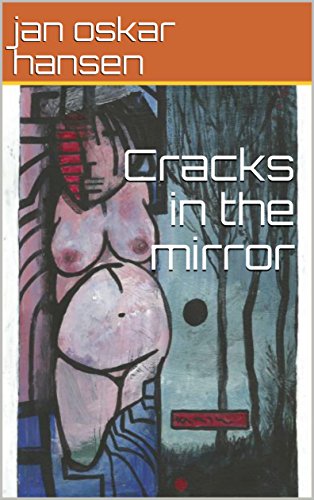
Cracks in the Mirror
Cracks in the Mirror is an exceptional book of poems consisting of a variety of poetry styles and forms with a unique tone of articulation by Jan Oskar Hansen. This recent 2009 issue has some connections to a very serious yet humorous poem in his 2008 pub
Amazon USA| Cracks in the Mirror - Stimulating Poems of Adventurous by a World Traveler Reviewed by Joseph S. Spence, Sr., Trilogy Poetic Literature and Prose |
|
Cracks in the Mirror is an exceptional book of poems consisting of a variety of poetry styles and forms with a unique tone of articulation by Jan Oskar Hansen. This recent 2009 issue has some connections to a very serious yet humorous poem in his 2008 publication, Homecoming…Prose, Poetry and Senryu. Though not an oxymoron, one should be able to draw several similarities between the two poems and both books. The first poem which has the title of the book “Cracks in the Mirror,” is parallel to the poem “Misfit,” in Jan’s 2008 Homecoming book. Cracks in the Mirror highlights his ship sailing away without him. He is now stuck in a hotel room which he has to leave; however, he needs a drink or two first. Likewise in “Misfit,” he is with a bunch of fancy suits wearing lawyers; however, after changing his clothing back to his seafaring outfit he sees his boat leaving the pier. He tastes blood while running to his boat, but too late, it left him. Upon walking back to the fancy restaurant where the lawyers were, they saw him as a waiter and request that he brings drinks to them. After his boat left in Cracks in the Mirror, he held two fingers in the air leaving one to wonder which two. The answer should be some what obvious. Poor Hansen! Cracks in the Mirror has a variety of scenes from many places where Jan has apparently set foot. This volume will take the reader to Spain; the Caribbean; Paris in September where it’s melancholia; a wedding in Brussels; September in Norway where he remembers walking home after a drink of whiskey; Egypt and the Suez Canal; Portugal in spring, where the snow is pure and God’s footsteps are visible; Rome, where a Roman Centurion soldier encounters unseen terrorists; Argentina, where he hides in the belly of a dead horse; and Denmark, where he enjoys dancing with a maiden of brown eyes and a promising glint. These and many more incredible and memorable adventures await your eyes and mind. Family is always close to Jan’s heart while sibling rivalry seems to permeate. Relationships are a part of his poems, which read like a novel concerning his family members. For example, his uncle who leaves his room only to eat then disappears one day; his mother who rides a bike with him to the beach in the summer, purchase ice cream for him, and gives him a hug; his father in “Ash & Victory” who drinks straight from the bottle and slams the door; and his brother the Swiss who is unfavorable and speaks his mind in letters oozing resentment. This family is certainly funny and is reminiscent of a movie. The thoughts of war are not far from Jan’s mind, since he knows that war affects the lives of many. For instance, the following poems state the case: “The Forgotten Remembered,” gives an excellent example of war remembrance. “Soldier Hero,” brings one to grips with post mortem medals as soft as plaster on ulcers of grief. The thought of suicide bombers who think they will live forever is shocking. “The Ghost,” brings to life the imagery of the ending of a war and going home to eat. A “Child of War,” who sits on a steed and leads men of iron into oblivion is quite a scene. The “Meaning of Life” regarding how people ache while swords swing will have you on the edge of your seat. The issues of “US Soldiers” still in Iraq after five years, representing brave working kids who are subject of manipulation will stir your thoughts. In “Inconsequent Calamity of War,” we find a janitor who is too old to serve in the navy to see the world, which will make you wonder. While reading these pieces the symbology and imagery will jump right out at you, and are quite vivid. The use of various forms of poems tells many stories in this volume. The narrative poem form flows with ease of reading; a variety of senryu pieces consisting of three lines will stimulate the senses of sight and sound; visualization comes to life in the sestet form of seven lines; and the quatrain form of four lines are also potent in their impact. Some of the pieces also flow like prose poetry with the enhancement of T. S. Elliot. Interestingly enough, T. S. Elliot is a part of the conversation involving the poem, “Versifiers, Wine and Nature,” with has some wonderful thoughts. This is an excellent volume of poems by Jan Hansen. One must read it to appreciate it. Distinguishable techniques enhancing the poems include: alliteration, assonance, climax, character, antagonist, figurative language, concrete detail, figure of speech, rhyming, mood, and metaphor, just to name a few. One may learn more about Jan Oskar Hansen by visiting: http://www.cyberwit.net/authors/jan-oskar-hansen |
